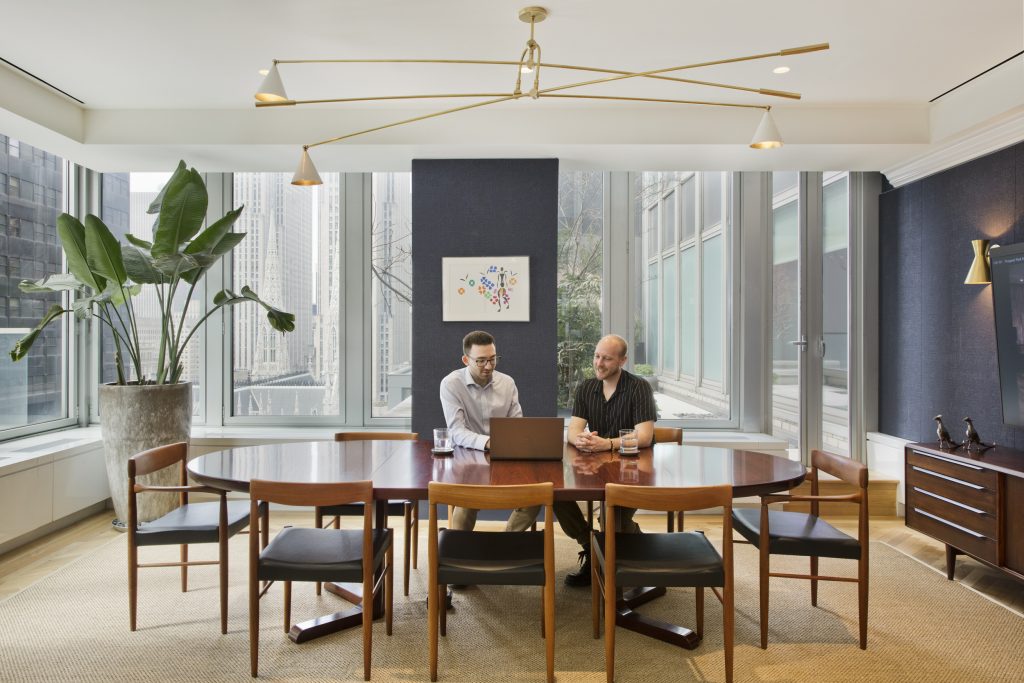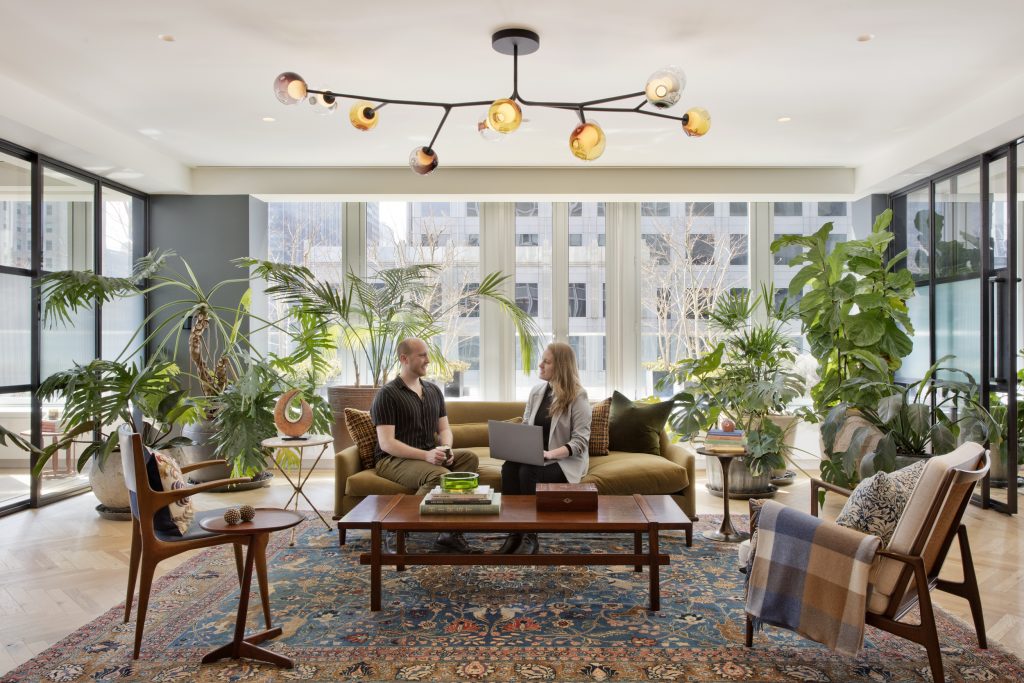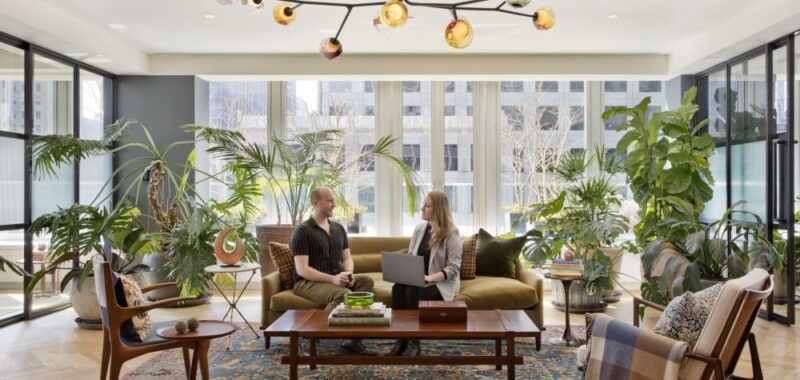Spectorgroup’s Steven South explores how upcycling discarded office furniture can not only reduce waste and carbon emissions but also transform workplace culture, fostering a more environmentally conscious future.
Discarded furniture has a tremendous environmental impact. In fact, the Environmental Protection Agency has found that the amount of furniture being landfilled in the U.S. has increased by over 300% since 1960. Office furniture is a major contributor to our country’s waste problem. Materials used, production energy, and transport emissions all contribute to the carbon footprint of the contract furnishings industry, not to mention hidden environmental impacts like deforestation and pollution. As society continues to emphasize the importance of sustainability, workplace designers must acknowledge our role in the waste cycle and implement innovative solutions to strive toward a more sustainable future.
Upcycling: Environmental and Business Benefits
Furniture upcycling presents a variety of benefits for both the environment and for businesses that are committed to sustainability. Instead of discarding old furniture, upcycling explores the opportunities to give old pieces new life with a fresh coat of paint or by relocating them to different areas within the office. By reusing and refurbishing office furniture, companies can help reduce the industry demand for raw materials, which decreases waste production. This strategy also eliminates the need for extensive transportation and production associated with manufacturing new furniture, further reducing carbon emissions. Additionally, upcycling proves to be a cost-effective strategy, as it extends the lifespan of furniture, allowing businesses to save money and resources in the long run.

Repurposing Old Furniture: An Industry-Wide Impact
Upcycling addresses the prevailing cycle of “fast furniture,” in which companies opt for inexpensive options upfront, leading to frequent replacements and waste due to poor quality and durability. Instead, we can creatively repurpose and breathe new life into old furniture to divert them from landfills, encouraging a sustainable approach to consumption.
The concept of upcycling old furniture especially resonates with younger generations who are drawn to the uniqueness and character of vintage pieces.
As this generation is more likely to buy things secondhand, startups like AptDeco that facilitate the repurposing of furniture play a pivotal role in promoting sustainable consumption habits. This underlines the importance of craftsmanship and authenticity to young consumers who prefer sustainability and style without the environmental impact of mass-produced furniture. Given this insight, we can cultivate a culture of resourcefulness and creativity while reducing our environmental footprint.
Emerging Trends in Sustainable Furniture Manufacturing
Major furniture manufacturers are also recognizing the value of sustainability in their business practices, balancing profitability with environmental stewardship, underscoring a shift towards longevity and resourcefulness in design practices. Manufacturers are also being encouraged to develop products with reconfigurability and refinishing capabilities, allowing for easy updates without the need for major replacements. This is a significant departure from mass-produced, disposable furniture that prioritizes convenience over durability. Instead, there’s a growing recognition of pieces that stand the test of time, in terms of quality craftsmanship and timeless design.
Overcoming Challenges in Upcycling
When it comes to upcycling, the challenges often lie in navigating the surplus of furniture and aligning with a client’s visions for the design. If a company downsizes and no longer needs a large number of workstations, the question arises: what to do with the excess? While there are furniture dealers specializing in refurbishing, finding the perfect fit for functionality and aesthetics can be a challenge, especially as outdated pieces like older, bulkier workstations become obsolete as we shift towards lighter, more sustainable designs. Convincing clients of the potential of upcycled furniture can be a hurdle since some of these pieces are no longer aligned with modern workplace aesthetics. However, with proper education and advocacy, many companies are starting to come around to understanding the impact of their purchasing actions.
Empowering Clients through Education
By highlighting the environmental and economic benefits of upcycling, clients can better understand the value of incorporating refurbished or repurposed furniture into their office design. Providing case studies and real-world examples of successful projects with upcycled furnishings can demonstrate the potential for creating aesthetically pleasing and functional workspaces while minimizing environmental impact.

For a recent Manhattan office project, we used primarily antique furniture and strategized ways to make it more functional. All of the office tables are mid-century dining sets, which were converted to include power, giving them a longer lifespan with modern upgrades. Offering guidance on where to source upcycled furniture and how to integrate it into existing office layouts can encourage clients to make informed decisions. Educating clients about office upcycling can drive positive change and play a significant role in sustainability in the workplace.
Cultivating Workplace Culture and Inspiring Change
Beyond a unique and personalized workplace, office upcycling demonstrates a commitment to environmental stewardship and instills a culture of sustainability among employees. This enhances the company’s reputation as a socially and environmentally conscious organization while appealing to eco-conscious consumers and attracting top talent who prioritize ethical business practices. Through the adoption of upcycling initiatives, organizations can reduce their environmental footprint and create an environment that fosters creativity, innovation, and employee engagement—paving the way for a more sustainable future for generations to come.

